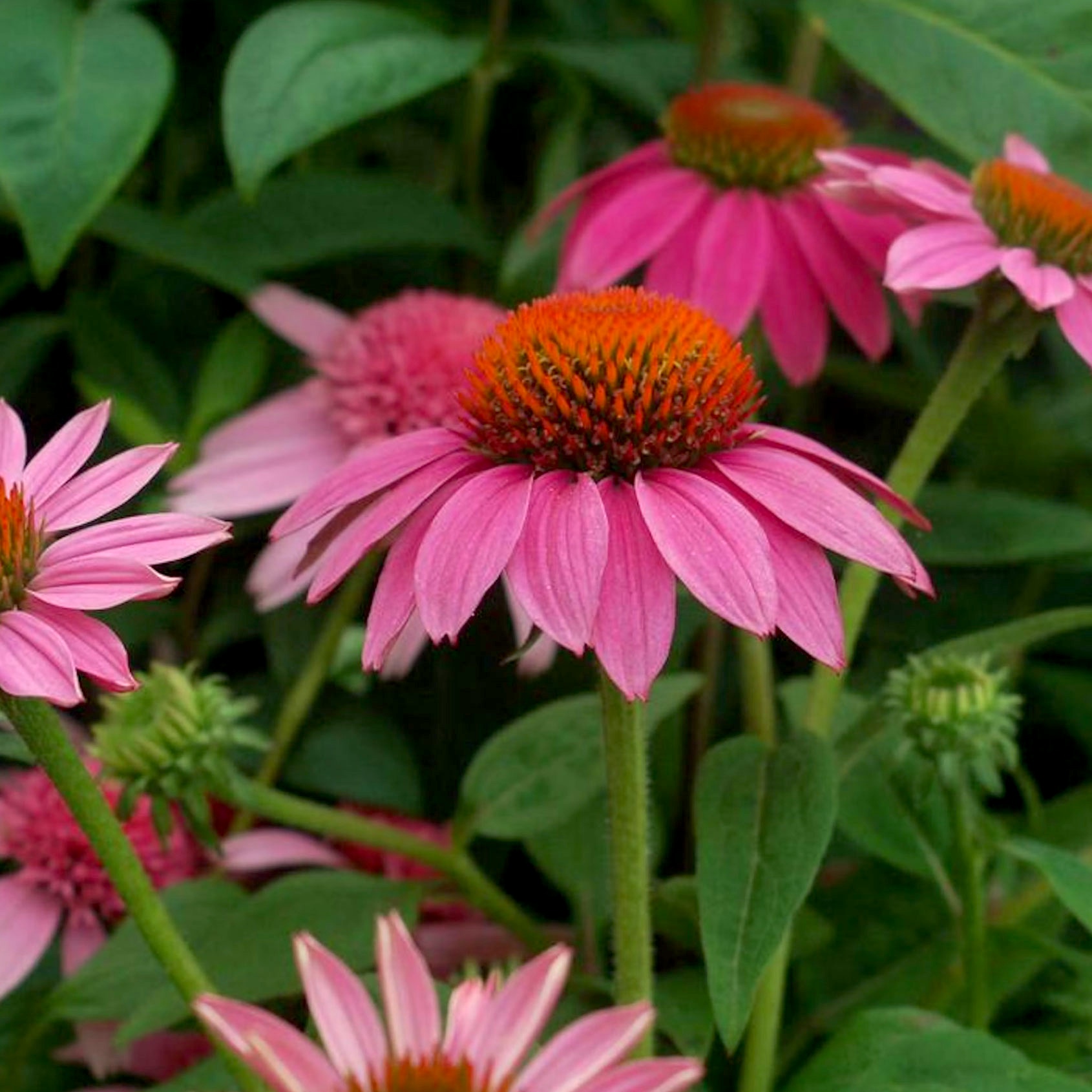Shade Plant Superstars for Lazy Gardeners – Grow These 5 Shade Plants That Thrive On Neglect For No-Fuss Backyard Beauty
If you’re stretched for time and short on sunny garden spots, make sure you grow some of these shade plants that thrive on neglect. Guaranteed to brighten your day the easy way!

Amy Draiss
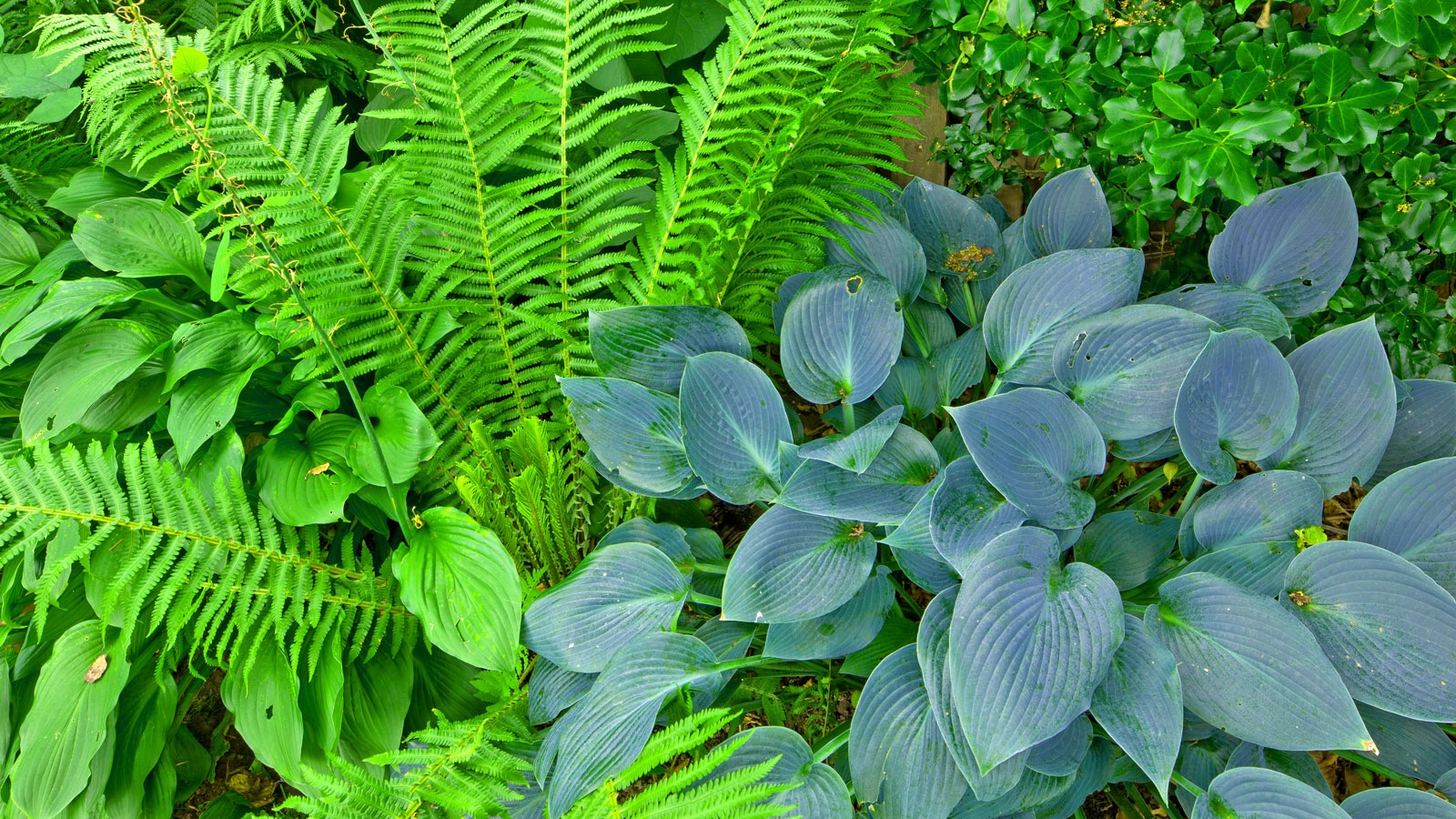
Struggling for sunshine? Struggling for time? But still looking for the ultimate low-maintenance plants to bring easy tone and texture to your weary, weather-worn corners? No problem – because hard as it is to imagine, there are shade plants that thrive on neglect. At least, there are plants that will cope very well with a lack of ongoing maintenance.
For some plants, it can feel like an ongoing effort, grappling with watering cans, plant supports, feeding regimes and pest controls. We hear that – if you’re looking to save a little time in the garden so you can kick back and enjoy just resting in it instead, it’s time to introduce these easy-going perennial shade beauties into your quieter, drabber growing corners. Grow some of these shade plants that thrive on neglect – for minimal input and maximum reward. Who said backyard beauty had to be hard work?
Choosing Shade Plants That Thrive On Neglect
When considering low maintenance shade plant selections, there are still a few things to keep in mind. Yes, these plants are unfussy and won’t be crying for attention every hour of the day. But there are still (pardon the pun) a few ground rules to consider. While these plants are all shade tolerant, there is an optimum level for each plant to develop at its best. Be objective about the nature of the shade you have to spare, as there is a difference between partial shade and full shade, particularly with regard to vigor, flowering, and long-term health.
When considering plants that thrive in shade and neglect, make sure you have tested the soil pH and general quality. It is always worth making adjustments to the ground for specific plants and flowering perennials – especially where plants need more acid-based or alkaline-based soil conditions. Yes, these plants are easygoing, but at least get them off to the best start you can – then you can leave these underrated shade plant superstars to their own devices with absolute confidence.
1. Astilbe
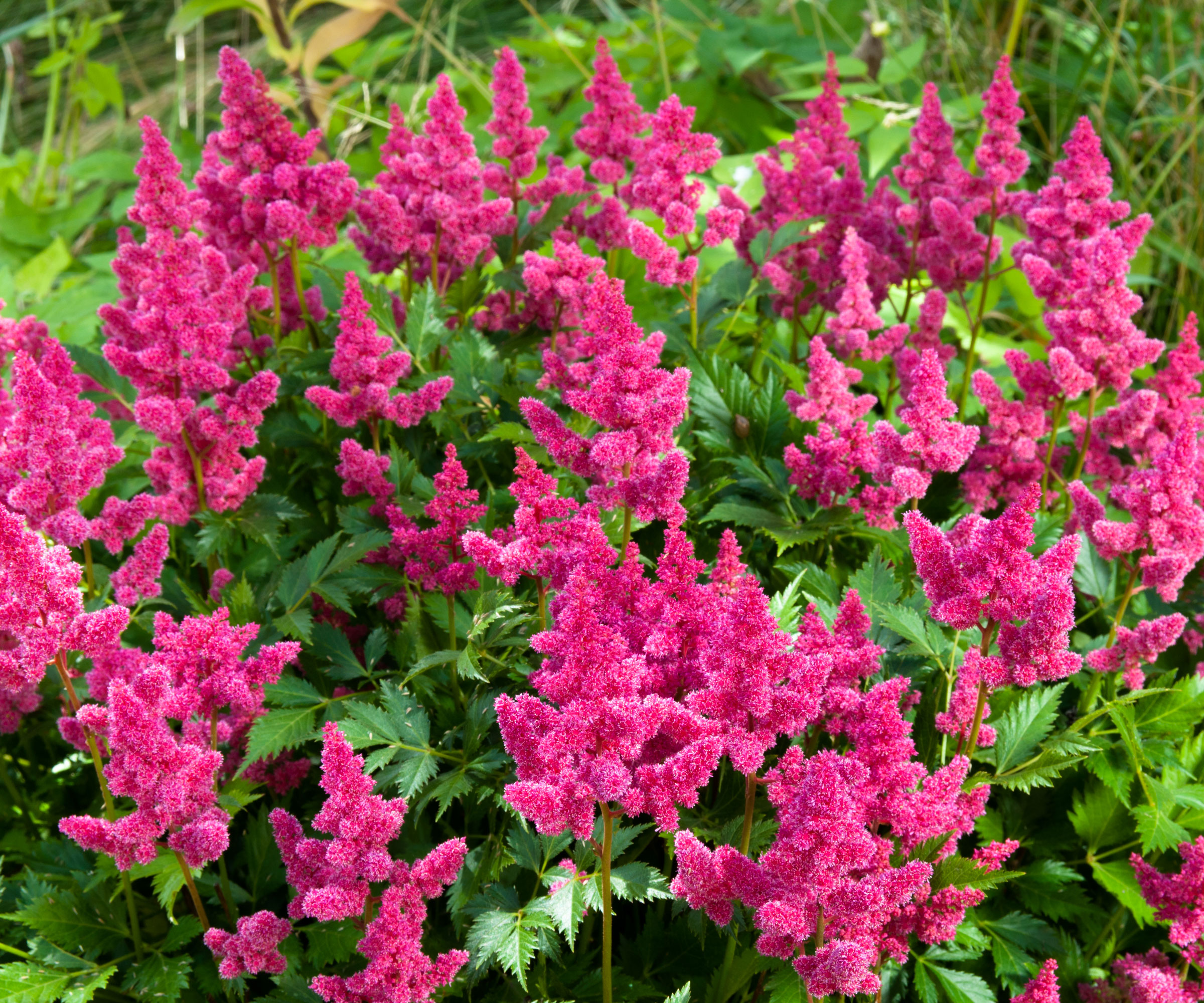
The artist formerly known as goat’s beard is as resilient and easygoing as the creature that inspired the name. False spirea (Astilbe japonica) is a clump-style perennial that is happy in partial or full shade, and quickly styles it out within masses of fern-style foliage.
A popular sight in woodland spots, there is something of the tough beauty about astilbe. Perfectly happy roughing it in damp spots, yet not above working her feminine charms – this easygoing shade-dweller can effortlessly delight with fluffy conical plumes of pink, red, burgundy, orange and white blooms that froth upwards in late spring and early summer.
There’s only one bit of ongoing plant care required if you want this low maintenance plant to stick around for the long haul. Thanks to the rapid growth of astilbe plants, you will need to intervene every three years to divide the clumps, guaranteeing a bigger display the following year.
Just keep conditions cool and relatively moist underground, and these easy shade plants are very forgiving. There are some dazzling astilbe varieties with mixed colors available. Try ‘Dark Side of the Moon’ from Burpee, with its bronze leaves and purple blooms.
2. Bleeding Heart
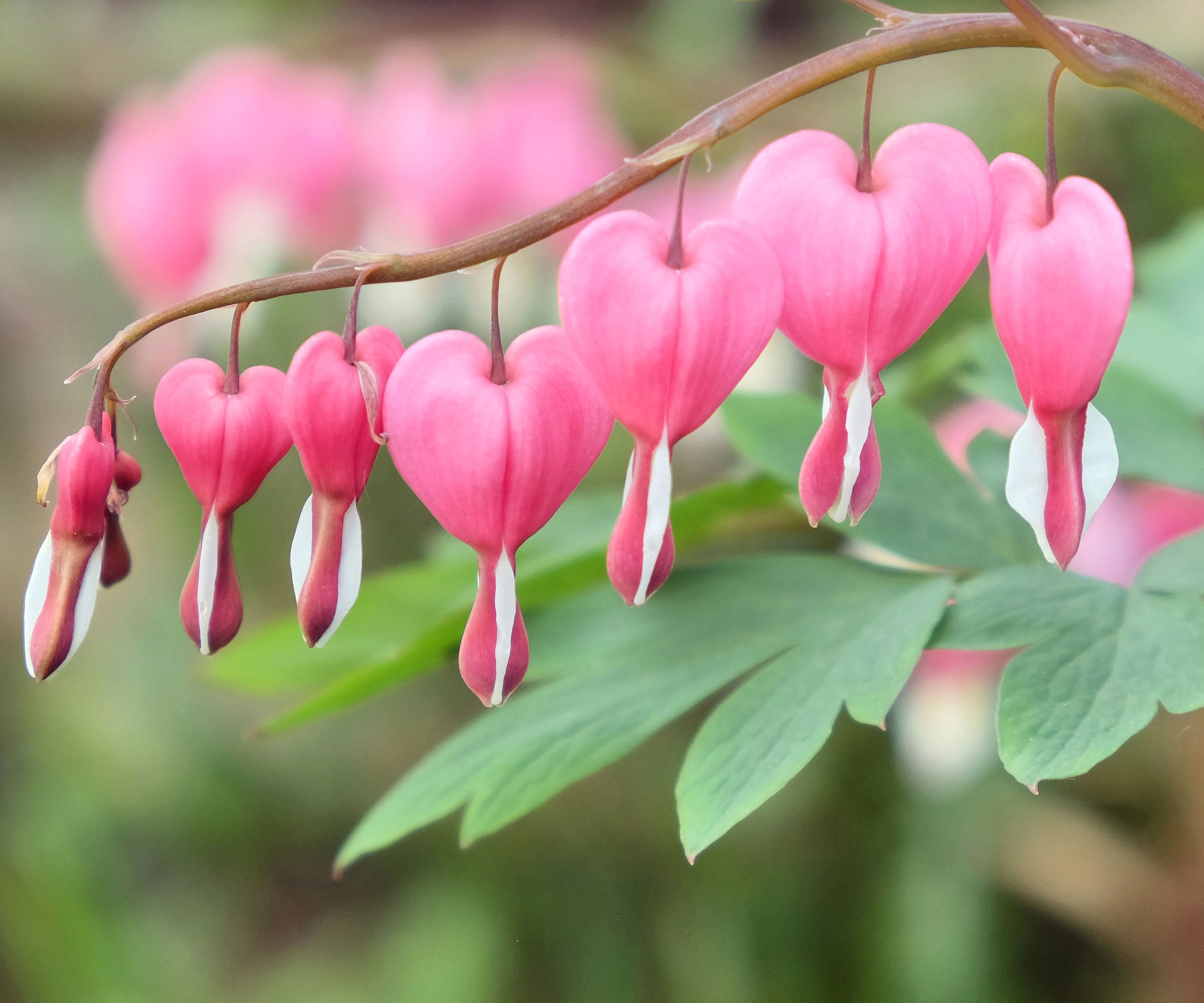
Lamprocapnos (Dicentra spectabilis) is a light shade lover with a name that speaks directly to its gentle nature. With its lacy leaves and distinctive pink or white heart-shaped blooms, this herbaceous perennial is an easy garden winner that brightens up dull corners with late spring devotion, even with minimal attention.
While it can handle some morning sunshine, it seems happy enough spending afternoons in a state of dappled solitude. Rising to 3ft (90cm) tall, these clump-forming plants prefer neutral or alkaline soils, but don’t mind sandy or clay foundations as long as conditions can remain moist, rich and well draining though summer.
Again, it’s a good idea to divide these plants every few years to rejuvenate their growth. Furthermore, although it’s fine to leave these elegant beauties to their own devices during the flowering season, you’ll find that prepping the soil with some leaf mould or other organic matter ahead of flowering will return the finest display.
Hardy in USDA zones 3-9, bleeding hearts even hold their own against slugs, which is more than can be said for other garden perennials. Some gorgeous bleeding heart varieties that hold up especially well to bouts of neglect include pure white ‘Alba’ and two-toned ‘Pink Diamonds’ from Proven Winners.
Sign up for the Gardening Know How newsletter today and receive a free copy of our e-book "How to Grow Delicious Tomatoes".
3. Columbine (Aquilegia)
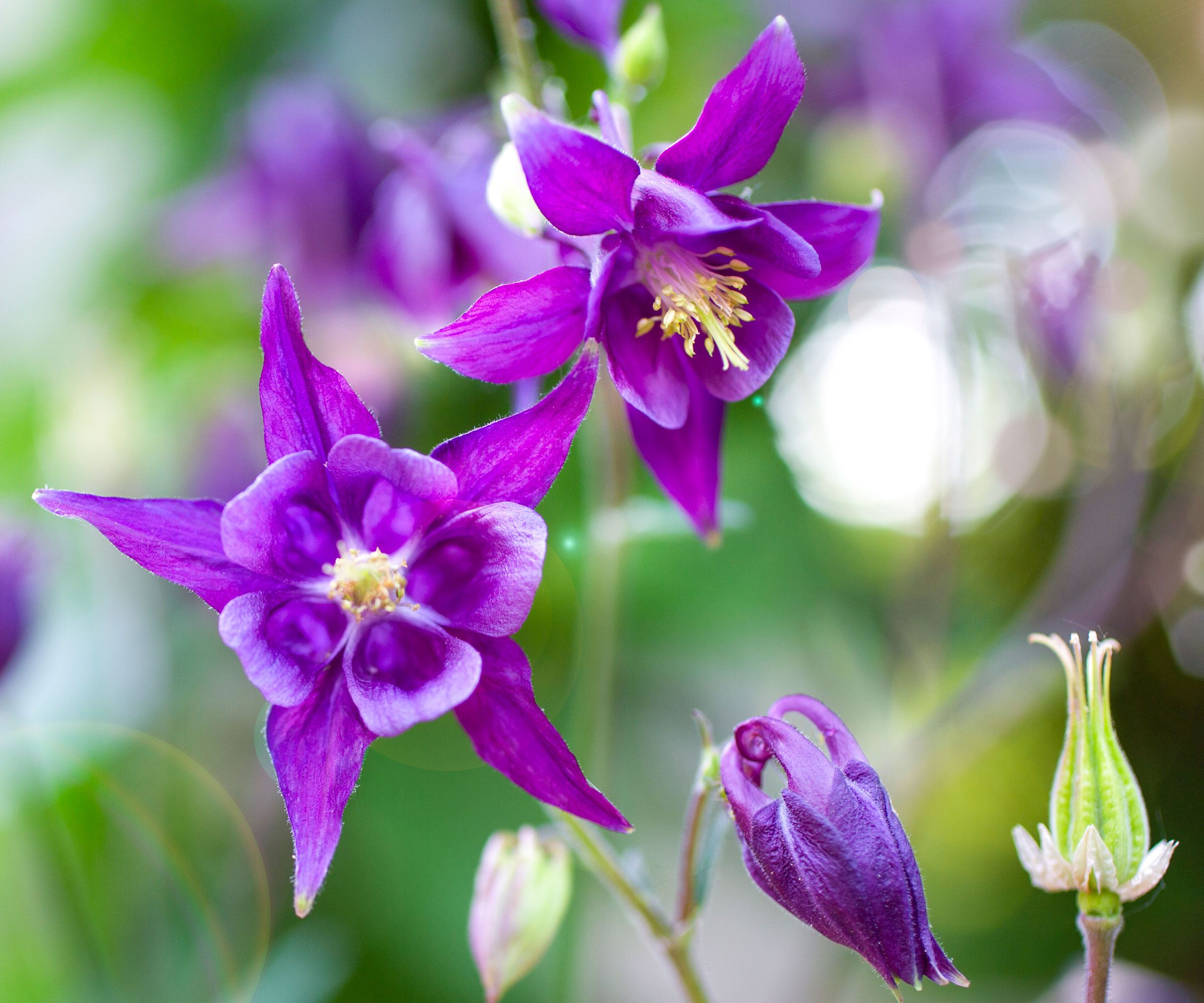
Part of the similarly easygoing hellebore family, free-spirited aquilegia quickly finds a groove in part shade and moist soil. These shade-loving flowers seem to pop out of the ground years after you have forgotten you planted one, arising from nothing and seemingly thriving on less. Beloved of pollinators, they fill borders with easy charm yet want for little but a spot to do their thing.
The only thing columbine plants can’t really abide is a poor-draining soil. Get that right, and it’s hard to get rid of them. Although they are ostensibly short-lived perennials, they spread very easily by self-seeding and cross-pollinate with other aquilegia in the vicinity to create unexpected new forms – all without any human intervention required.
There are so many varieties of columbine, it’s hard to keep track, and new hybrids keep appearing all the time. Presenting with dynamic two-tone patterns in jewel-bright clusters of pink, lavender, blue, purple, white and burgundy, there’s a gorgeous choice of aquilegia available at Burpee.
4. Foamflower
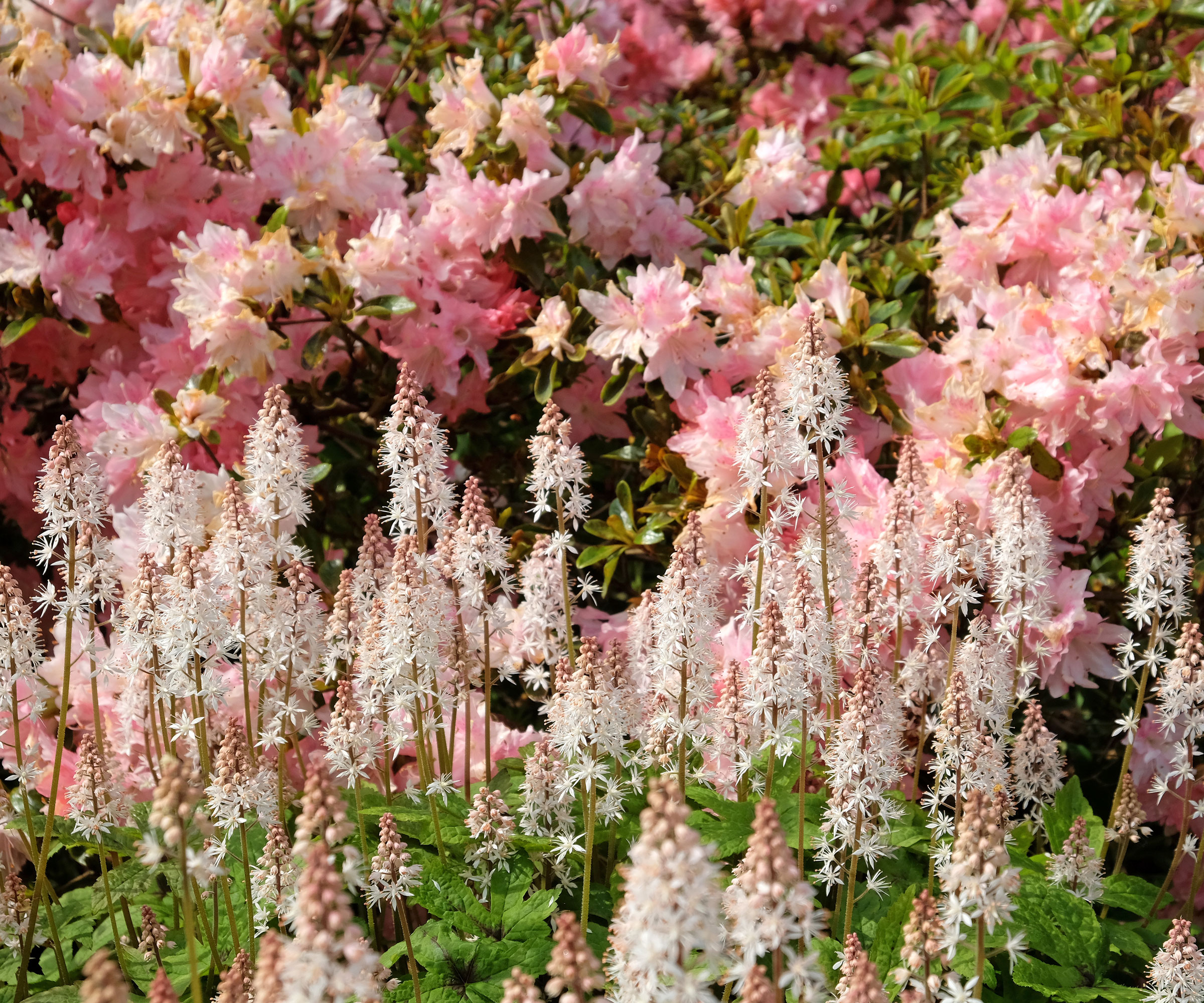
Frothy and creamy foamflower (Tiarella cordifolia) is another one of those flowering shade plants that works well in tricky corners and underplanting schemes, and copes well with inattention. Happy and adaptable in a range of less-than-ideal conditions around the garden, these pretty spring-flowering herbaceous stalwarts are a lot tougher than they look.
Hardy in USDA zones 3-8, their pink and white feathery spikes are a magnet for bees, butterflies and other pollinators. While it is not the most drought tolerant plant in the pack, it is an exceptionally unfussy groundcover plant in many ways. These easy care plants for shade spread by runners and relatively resistant to most of the usual garden pests.
While conventionally only found in white, more varieties are appearing with blush tones, such as ‘Sugar and Spice’ and ‘Pink Skyrocket’. For a classic understated elegance, try something from the creamier end of the spectrum. We love ‘Cutting Edge’ from Proven Winners, with its ethereal spires of star-shaped flowers and classy chocolate-veined foliage.
5. Hosta
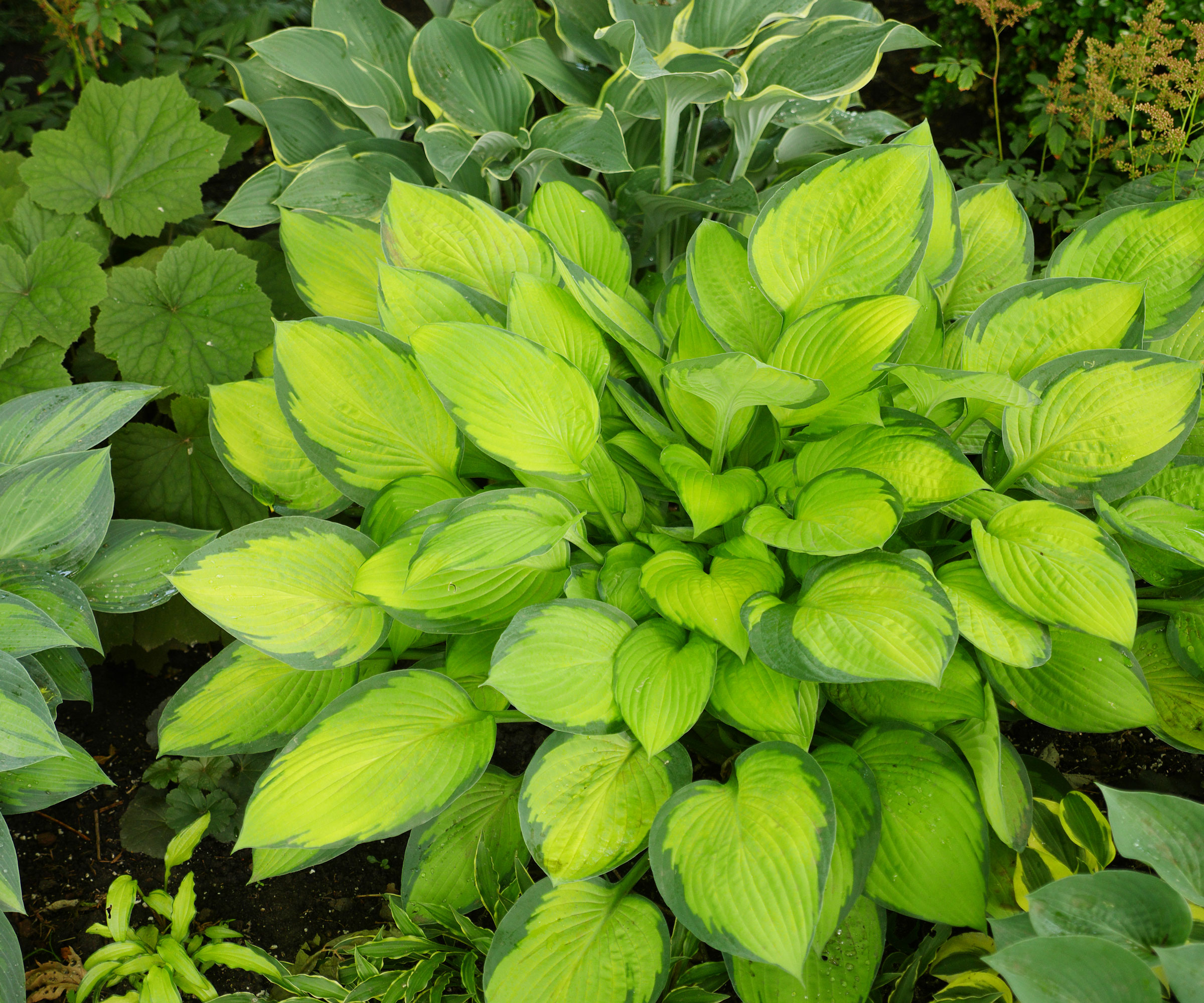
We couldn’t do a roundup of ‘love them and leave them’ shade-dwellers without mentioning the hearty hosta! Unassuming and laid-back to the point of horizontal, hostas seem to slide effortlessly into the background in busy ornamental displays. Propping up the big players, it's easy to overlook their scale and resilience. Yet with relatively little gardening input, they create ripples of interest with their generous leaves and hefty spread.
Morning sun and afternoon shade is the dream scenario for hostas, which love growing under trees and in quiet corners that other plants detest. There are more than 2000 cultivars of hosta, ranging from bright jewel green tones and variegated cream forms to supernatural blues and teals. The bluer the leaf tone, the more shade they can withstand – but irrespective of color, you won’t need to do much to enjoy these self-sufficient beauties.
Whether you choose a dwarf or giant form of hosta, you should only need to intervene every five years or so to divide plants. Do this in early spring when you start to see the leaves emerge from the ground. The only real problem with neglecting hostas is that other members of the animal kingdom may show them love in abundance – chiefly, slugs, snails and deer. If you want to see your hostas next year, check in on them every once in a while.
Apart from that, they won’t demand much and will repay you with lots of lush and lovely garden interest. There are plenty of gorgeous hosta varieties available to buy. We love ‘Fire and Ice’ and ‘Mouse Ears’ hostas which you can buy at Walmart.
This article features products available from third party vendors on the Gardening Know How Shop. Keep in mind that our plant inventory is limited - so if you’re thinking of purchasing, don’t wait!

Janey is a former assistant editor of the UK’s oldest gardening magazine, Amateur Gardening, where she worked for five years. For the last few years, she has also been writing and editing content for digital gardening brands GardeningEtc and Homes & Gardens. She’s taken part in a range of conservation and rewilding projects for the Royal Horticultural Society (RHS) and the British Trust for Conservation Volunteers (BTCV) as a way of exploring her horticultural horizons. She is currently undertaking her RHS Level 2 certificate in The Principles of Plant Growth and Development.
- Amy DraissDigital Community Manager
